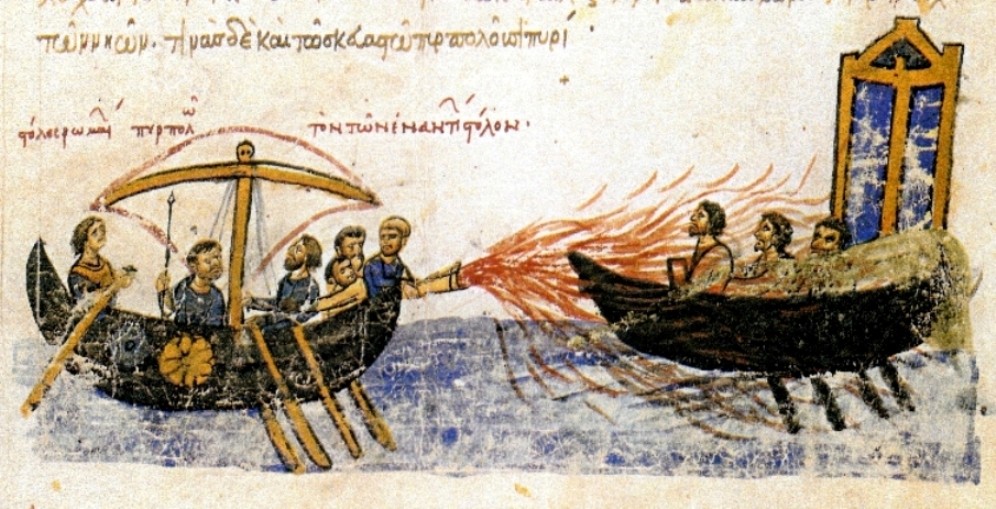
The article discusses information sources of the 10th — 11th centuries about the oil fields in the area of the Bosporus needed to produce the secret offensive weapon of the Byzantine Empire, i.e. the famous “Greek fire”. Methods. The study is comprehensive. Along with a review of written sources allowing to establish the chronology of the most active period of using the Byzantine “Greek fire”, their material evidence of the oil fields development on the banks of the Kerch strait and the subsequent transportation of Bosporus oil in the central regions of Byzantium were analyzed. Analysis. The treatise of Constantine VII Porphyrogenitus De Administrando Imperio contains a message about the oil fields in various areas of the Northeastern Black Sea including the Asian Bosporus which are traditionally considered as sources of raw materials for the famous secret weapons of the Empire — the so-called “Greek fire”. The unique nature of this information, in fact, has reliable archaeological evidence. During excavations of many settlements and fortresses of the Bosporus a sufficient number of examples of the local oil production and transportation to the central areas of Byzantium were found. In the late 9th — 11th centuries containers for the oil transportation were the so-called jugs with a high neck, the general chronology of which generally coincides with the period of the most active use of the “Greek fire” by the Byzantine fleet in fighting against numerous opponents of the Empire. Results. As the study shows, in addition to the military-strategic and political component, the interest of Byzantium in ensuring control over the territories of the Bosporus was probably due to the abundance of numerous sources of oil needed to manufacture the secret offensive weapon of the Empire — the famous “Greek fire”.
Source: Naumenko V.E. (2019) About the Bosporos Oil of Constantine VII Porphyrogenitus and the Byzantine “Greek Fire”: Archaeological Evidence. Vestnik Volgogradskogo gosudarstvennogo universiteta. Seriya 4. Istoriya. Regionovedenie. Mezhdunarodnye otnosheniya [Science Journal of Volgograd State University. History. Area Studies. International Relations]. Vol.
Source web-site: https://hfrir.jvolsu.com/index.php/en/component/attachments/download/2088
Number of views: 2802